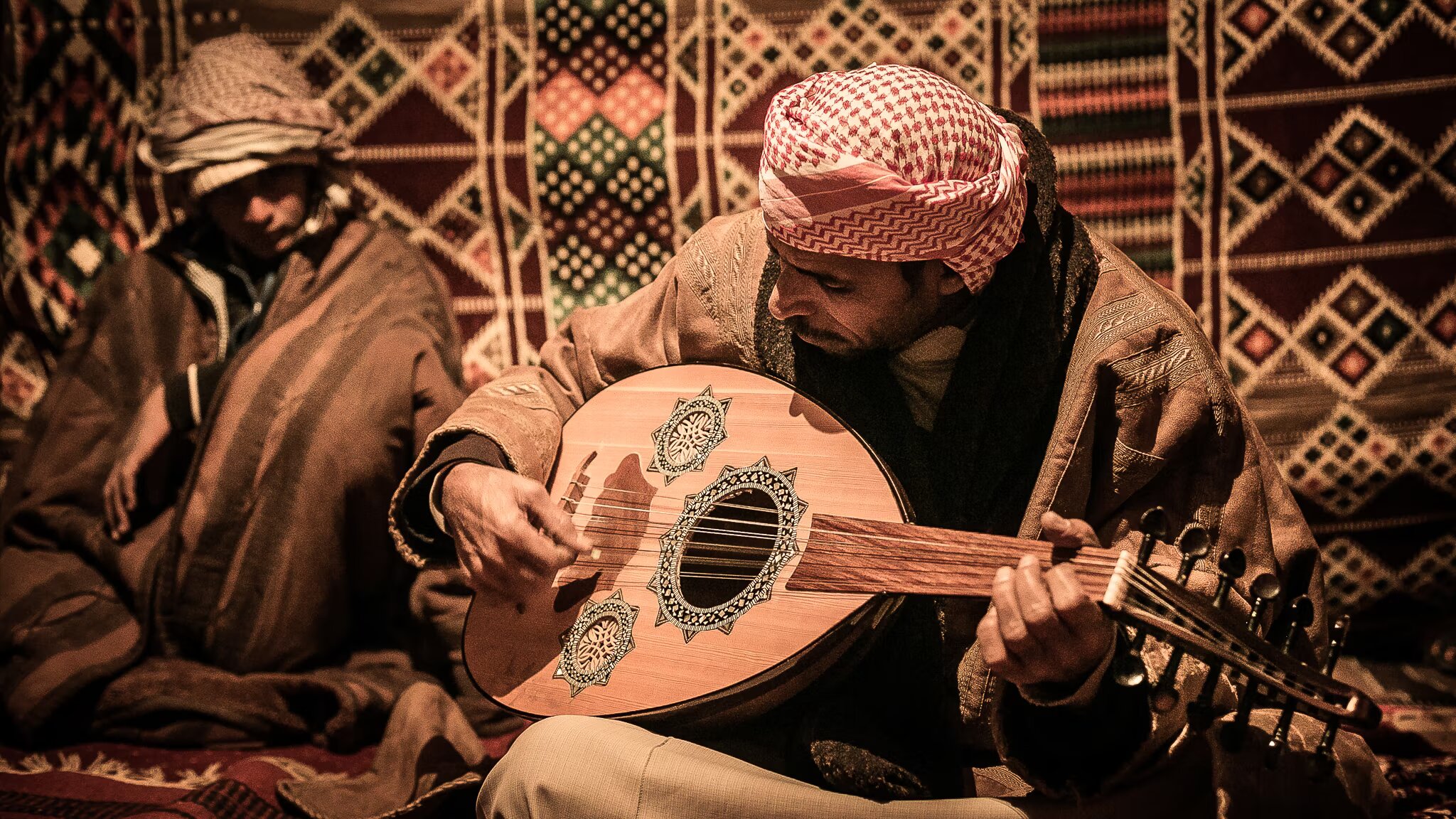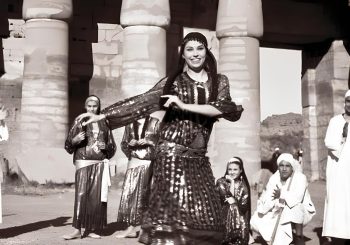An essential facet of Sinai’s diverse cultural landscape, Bedouin music acts as an auditory tapestry, vividly illuminating the rhythm of life for the desert nomads. The desire to migrate or embark on a journey is deep-seated, ancient, and instinctive, and their music embodies the ancient wisdom of tasting the fruits of traveling and roaming, but never forgetting one’s own home or roots.
For nomads in the desert, the world can be seen, felt, and expressed through one single flower. Undistracted by flashing city lights or skyscrapers, their wandering eye is often mystified by simple and short moments.
Living in these raw environments, music is a way to not only express beauty, but also to appreciate the simplicity of living — of being wholly present and alive, and of experiencing life in all of its complexities, challenges, and struggles. Whether it’s an enraptured wedding celebration or a solemn narrative of heartache, the music eloquently represents the fervor and intensity of human experience.
The Sinai Bedouins, who are renowned for upholding their ancient customs and traditions, evoke a strong sense of connection through their music, and their songs often reflect the vastness of the desert, the beauty of the mountains, and the serenity of the oasis.
While not much has been written or researched about this kind of music, there are still ways to discover them without having to travel all the way to Sinai or other areas in North Africa and the Middle East. From the beats of the hand drum (Darbuka) to the entrancing tones of the Rababa — one of the oldest string instruments — each instrument adds a unique flavor to the sound, enriching the auditory experience.
Below are examples of songs and artists that reflect the rawness of nomadic life:
The Bedouin Jerry Can Band
The Bedouin Jerry Can Band were a small group of musicians from Sinai who were managed and created in 2003 by Zakaria Ibrahim, a music pioneer who ran the Mastaba center for Egyptian folk music in Cairo.
They are a group of semi-nomadic Egyptian Sinai desert musicians, poets, storytellers, and coffee grinders. Members are chosen from El Arish — the capital of North Sinai — and members of a Sufi sect from the Suwarka tribe.
The group released its debut album “Coffee Time” in the UK in 2009 thanks to a partnership between El Mastaba Centre For Egyptian Folk Music and 30 IPS, a record label in the UK. In 2011, El Mastaba Centre recreated the same album to be released in Egypt.
You can listen to their music on Spotify here.
“Ya Rayah” – Dahmane El Harrach
Although Dahmane El Harrachi was not a Bedouin himself, this iconic song carries the essence of Bedouin music. “Ya Rayah” translates to “Oh, the traveler” and reflects the longing of a wanderer for his homeland, which deeply resonates with the Bedouin nomadic lifestyle.
Rachid Taha, a French-Algerian singer, sang it on his second self-titled album in 1993, which went on to chart eleven on the French singles chart.
However, there are far more songs and artists that cannot be easily found on streaming platforms due to lack of investment and promotion, and can instead be found on a few YouTube videos as well as catalogs that have been collected by travelers. One of these songs is “A Fisherman’s Song” by Abu Rodeis, where the listener can clearly hear the sounds and rhythms of the drums, and the social and community bonds between the musicians and audiences as they perform the song harmoniously.
Expanding one’s horizons with Bedouin music offers an unrivalled voyage through Sinai’s rhythmic core in a world where mainstream music genres predominate. Doing so also contributes to its preservation because it is a priceless art form that should live on for future generations.
Subscribe to the Egyptian Streets’ weekly newsletter! Catch up on the latest news, arts & culture headlines, exclusive features and more stories that matter, delivered straight to your inbox by clicking here.






Comments (2)
[…] Source link […]
[…] Bedouin Music: a Captivating Window Into Nomadic Life […]